IN THE face of mounting international disapprobation, how did white rule in SA sustain itself?
Ron Nixon tries to answer this question in Selling Apartheid: South Africa’s Global Propaganda War.
He is a Washington correspondent of the New York Times and an associate of the department of Media and Journalism Studies at the University of the Witwatersrand.
Unfortunately, his book disappoints.
As the title suggests, Nixon believes that apartheid SA "sold" — rather than "told" — its story to the world. His narrative draws from three sources: published work, several interviews, and a peek into (mainly) American archives. His technique is the case study.
So he uses the exemplar case of apartheid’s "unorthodox diplomacy" — the well-documented Muldergate scandal of the 1970s. Its infamy was heightened by the fierce interdepartmental rivalry it generated. It also ended the careers of the then-prime minister, John Vorster, and Connie Mulder, the influential information minister. Mulder was considered to be next in line for the top job.
The conspiracy aimed to buy newspapers in the US with taxpayers’ money. Through these, apartheid’s cause would be promoted in an America in which the issue of human rights was increasingly drawn towards the foreign policy debate. SA aimed to tap into a counter-narrative that eventually led to the Reagan presidency, the rise of free market economics, and the "second" Cold War.
As Nixon points out several times, the events that culminated in Muldergate were spearheaded by a 30-something former journalist and sometime government information officer. His name was Eschel Rhoodie, a controversial character in any book.
The Paper Curtain, a polemic Rhoodie wrote, seemingly was the text that enabled SA’s traditional diplomacy, modelled on formal state-to-state practice, to change into a policy of buying influence in high places in Washington and other Western capitals.
When the Muldergate ruse was exposed, Rhoodie fled and purported sightings of him came to overshadow the scandal itself. Intrepid South African pressmen finally tracked him down in Ecuador. The occasion was marked by a photograph of him feeding a llama, on the front page of the then-Rand Daily Mail.
Nixon has used the seminal account of Muldergate, written by journalists Mervyn Rees and Chris Day, as the basis for his version of the story. So, on the Muldergate case, there’s very little new in the book.
In presenting another case, Nixon turns to another contentious character — Max Yergan, a Black American activist who arrived in SA in 1922 to pursue a career in the Young Men’s Christian Association (YMCA).
Posted to Alice, in the Eastern Cape, Yergan became close to many who would play a role in SA’s liberation — John Tengo Jabavu, John Langalilele Dube, Alfred Xuma, ZK Matthews and Govan Mbeki.
Ostensibly monitored by the state’s security apparatus, Yergan gradually lost his faith in Christianity (and in the work of the YMCA) as a force for liberation. During a visit to the Soviet Union in 1934, he embraced Marxism. Unsurprisingly, his South African friends found him a "changed" man when he returned to this country.
Three years later, and back in the US, he set up (and served) on various bodies that were the precursor to the worldwide anti-apartheid movement. In these spaces, Yergan rubbed shoulders with legends of Black American culture and politics: actor Paul Robeson, Nobel Laureate Ralph J Bunche, and pan-African intellectual WEB du Bois.
But Yergan’s political star was to crash, as the Cold War took hold, in a brutal argument with Robeson. This conflict drove Yergan back towards SA in the form of a newly found anti-communism. This was the official Cold War position of the government in Pretoria that he had once so strongly opposed.
In the 1940s Yergan made several visits to SA that were cleared by the FBI and sanctioned by the white government. During the course of these, Yergan and his fierce anti-communist views were spurned by the African National Congress, SA’s liberation movement, and by the South African Communist Party.
If efforts by white power to directly buy influence in the world — as in the Rhoodie instance — is one case in Nixon’s book, another — represented by the Yergan example — was the failure of Black Americans to understand that they too could be tricked by the persuasive power of the white purse.
But — and this is a failure of the book intellectually — the comparative value of these two cases, and others of similar ilk in the book, is of limited value. They are not thought through.
Nixon is strongest, empirically, when he is working the Washington patch: his access to individuals and to archival sources has brought several fresh issues to the fore. That said, he is weak on American policy towards apartheid SA and how this issue was linked to decolonisation in the subcontinent.
So, the important role of Henry Kissinger, Secretary of State under Richard Nixon, in the making of America’s African policy is poorly considered. When he was US national security adviser, Kissinger was responsible for what was famously called the "Tar Baby" option — America’s policy tilt to governments in Africa’s "white South" and intentionally away from the majority-ruled countries.
This move, more than any other factor, opened the way for Vorster’s government to "sell" its wares to the US and — as Nixon also claims — to its European Cold War allies. Unfortunately, as the focus moves towards these places, the empirical evidence weakens, and speculation drives the story.
Let’s be clear: there is no doubt that successive apartheid governments spent millions (and much energy) cosying up to political parties (and the great-and-good that supported them) in the UK, and in Europe. But the deep evidence for this, as presented in these pages, is a thin, thin reed.
There is an important and interesting book to be written on apartheid’s efforts to peddle its story through unorthodox diplomacy, but this is not it.
• Peter Vale is director of the Johannesburg Institute for Advanced Study, University of Johannesburg.
• This article first appeared in The Conversation www.theconversation.com


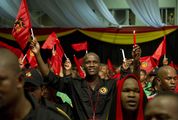
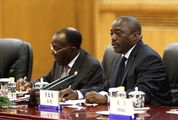




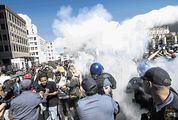
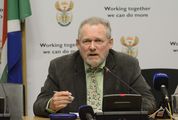





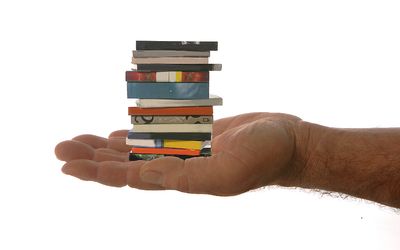





Change: -2.05%
Change: -2.09%
Change: -1.71%
Change: -1.64%
Change: -5.74%
Data supplied by Profile Data
Change: -0.17%
Change: 0.19%
Change: -2.05%
Change: 0.00%
Change: -0.12%
Data supplied by Profile Data
Change: 1.90%
Change: 0.90%
Change: 0.66%
Change: 0.70%
Change: 0.50%
Data supplied by Profile Data
Change: -1.45%
Change: -1.06%
Change: -1.54%
Change: 1.78%
Change: -1.08%
Data supplied by Profile Data